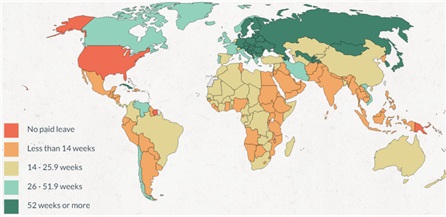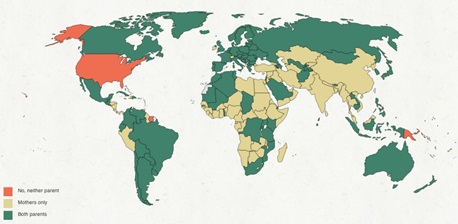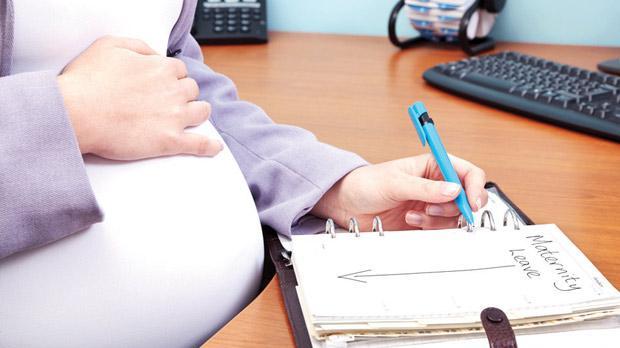Maternity leave can vary widely across countries, ranging from no paid leave in the US to a year (yes 52 weeks) in UK and Europe. While the basic principles of motherhood are same around the world – care, love, sleepless nights, physical and emotional upheaval, constant juggle to balance, the support systems are very different. Support system apart from maternity leave includes other things like societal structure, child care infrastructure, and access to resources like nanny, daycares and much more. The graph below highlights maternity leave across nations.
Maternity leave across nations

While there has been a tremendous body of literature and research on maternity leave provided by companies, there is pertinent discussion around paternity and parental (shared) leave provided by companies. Today, while 96% of countries provide paid leave to mothers, only 49% provide any leave to fathers, most often the leave is for two weeks or less. Paid paternity leave can extend anywhere from 0 days to as high as 14 weeks and above in regions like Europe, Australia, UK and Canada.
Paternity leave across nations

By granting leave only to mothers, we presume care giving is solely a mother’s responsibility. However this is changing. More and more fathers are leaning in to take parenting responsibility.
Advantages of paternal leave include:
- Father’s who take paternity leave are more involved with their children even after the leave ends. The time spent together creates an everlasting bond between the child and the father.
- There is enough research that shows children who spend time with both parents perform better intellectually and emotionally.
- Paternal leave allows dads to spend more time and share responsibilities more equally which keeps lower rates of post partum depression among moms and develops a healthy couple relationship.
- There are economical benefits of retention and productivity to companies which provide paternity benefits
It is also interesting to know that where longer paternity leave is offered, not all men avail of it due to cultural perceptions that raising a child is primarily the mother’s task, especially in countries like Japan, South Korea.
While there is maternity and paternity leave, there is an interesting discussion around parental / shared leaves that can be provided. Graph below shares parental leave across nations. There are clearly many countries which provide leave to both. This helps in building an equitable society.
Parental leave across nations

References: 2016 WORLD Policy Analysis Center

